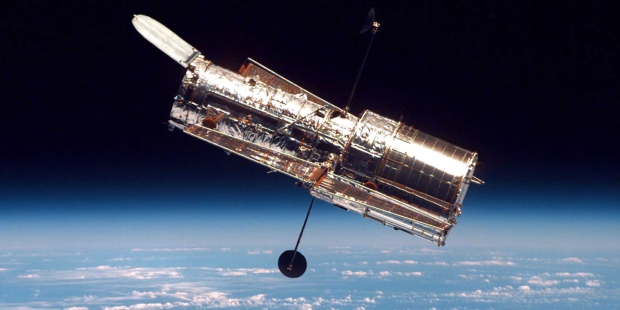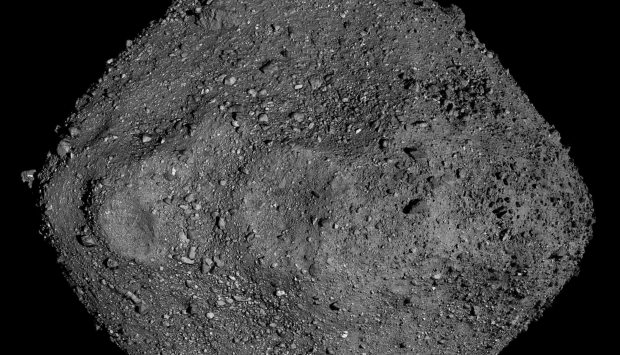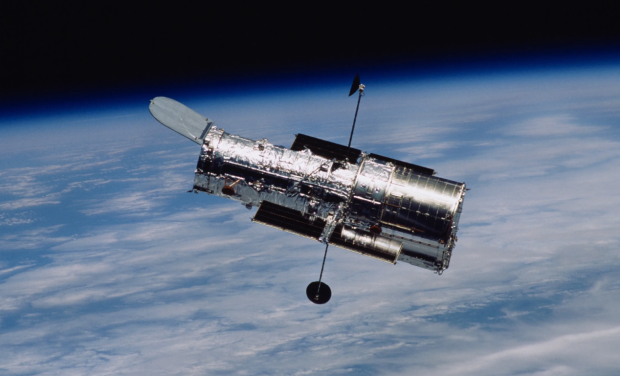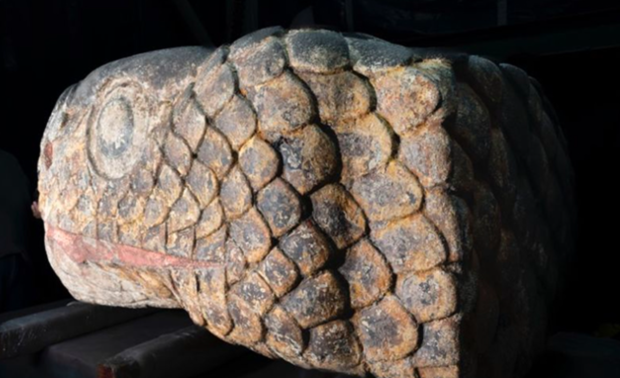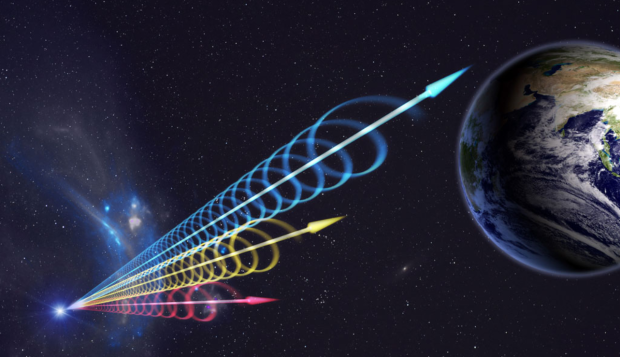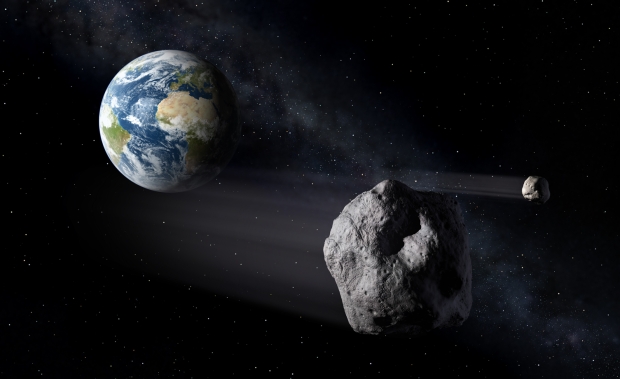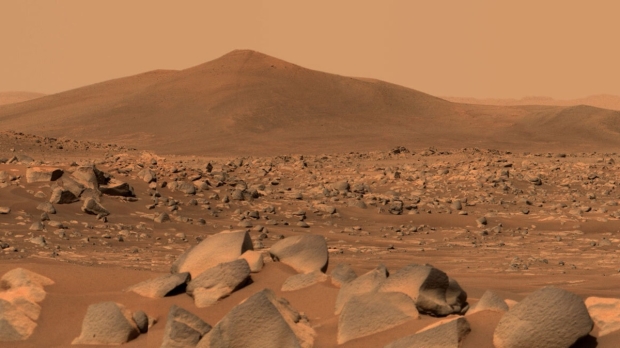Science, Space, Health & Robotics News - Page 28
NASA telescope photographs hypnotizing 'eyes' lurking in deep space
NASA has taken to its social media channels to share an epic image snapped by the iconic Hubble Space Telescope.
The space agency briefly explains in the above post on X that this image contains a menacing pair of "eyes" that create what seems to be a "cosmic skull". However, on its website, which has a more in-depth explanation of what we are looking at, the space agency explains that the "eyes" are actually cores of two galaxies that are on a collision course.
The entire system is officially cataloged as Arp-Madore 2026-424 (AM 2026-424), and according to NASA, while galaxy collisions are quite common, especially in the early universe, what isn't common head-on collisions such as this highlighted Arp-Madore system. The system is located approximately 704 million light-years from Earth.
Continue reading: NASA telescope photographs hypnotizing 'eyes' lurking in deep space (full post)
University issues warning for bomb threat involving robots, 'avoid until further notice'
A university within the US has issued a public warning to students on campus to avoid robots over a potential "bomb threat".
That message was rolled out to students on Tuesday by Oregon State University, which took to its dedicated X account to announce an "urgent OSU alert" for students to avoid Starship delivery robots across campus. The institution wrote, "Do not open robots", and to "avoid all robots until further notice". In an update posted to X its revealed that the bomb threat can be traced back to a student that was playing a practical joke, or a prank.
Starship has since responded to the alert by OSU, writing that despite the bomb threat being a joke it has decided to suspend all Starship robots across the campus until further notice as a precautionary measure. Notably, the Starship fleet consists of 20 food delivery robots that have been running across campus since 2020. OSU allows students and faculty to order food via the delivery robots from surrounding restuarants.
NASA drops update on new asteroid sample and the problem with its container
NASA has issued an update on its asteroid sample collection mission, officially dubbed OSIRIS-REx, revealing a problem with the container that transported the sample back to Earth.
The space agency took to its website to announce that preliminary analysis of the asteroid sample has proven extremely valuable as scientists identified the sample is both rich in carbon and water. The confirmation from NASA that the sample contains both carbon and water, the building blocks of life, adds to the theory that asteroids such as Bennu (the asteroid the sample was taken from) could have played a critical role in life on Earth, and perhaps other planets in the universe.
However, not everything is sunshine and rainbows, which is typically expected with a mission in space, as it's not often that every single aspect of the mission goes to plan. NASA writes in its blog post that the capsule containing the sample, officially called the Touch-and-Go Sample Acquisition Mechanism (TAGSAM), is much harder to open than initially expected, with NASA writing, "two of the 35 fasteners on the TAGSAM head could not be removed with the current tools approved for use in the OSIRIS-REx glovebox."
NASA confirms mysterious 'devil comet' size of two Mount Everest's is approaching Earth
A "devil comet" is about to make its close approach to Earth, and despite its name, that certainly comes with an uneasy sentiment, our planet isn't in any danger.
The comet is officially called 12P/Pons-Brooks, and the last time it came this close to Earth was more than 70 years ago, as the comet's orbit takes it far away from the planet to the outer reaches of the solar system before it makes it way back toward the inner solar system. Astronomers have measured the nucleus, or the core of the comet, and estimated that it's approximately the size of two Mount Everests stacked on top of each other, or 12.6 miles across.
By comparison, most comets are between 0.6 and 1.8 miles wide, according to Teddy Kareta, a postdoctoral researcher at Lowell Observatory in Flagstaff, Arizona. So, why is it called the "devil comet"? Well, it has "horns," or what appears to be horns. The comet's outgassing produces what looks like horns through astronomers' observations. As stated previously, the "devil comet" poses no risk to Earth and, at its closest approach, will come within 1.5 astronomical units (AU) of our planet. 1 AU is the distance between the Sun and Earth.
NASA's Webb telescope may have explained weird signals coming from a close super-Earth planet
Data acquired by NASA's James Webb Space Telescope (JWST) may be used to finally understand the weird signals coming from a super-Earth planet within our galactic neighborhood.
That planet is 55 Cancri e, which, according to reports, is the first super-Earth that astronomers ever discovered. The planet is located just 40 light years away from Earth and was originally discovered in 2004. Since then, astronomers have been puzzled at the strange signals coming from the planet, which indicate that the planet's atmosphere is continuously being produced but also quickly burned away.
In a new paper accepted into the Astrophysical Journal Letters, researchers argue that these strange signals are a result of intense volcanic activity on the surface of the planet. According to the study, constantly erupting volcanoes eject hot gas and carbon-rich elements that produce an atmosphere that is then ripped away from it by its parent star, located nearby. Notably, 55 Cancri e is positioned just 2% of the distance Earth is located to the Sun, meaning the planet completes one full orbit of its parent star in just 17 hours.
NASA telescope photographs two objects in deep space merging into one
NASA has released a new image snapped by the iconic Hubble Space Telescope, and this time, the powerful space telescope has honed its sensitive instruments in on two objects in deep space merging into one.
The European Space Agency (ESA) has taken to its website to detail the new image, writing that the objects within the image are galaxies officially called NGC 7733, which is the smaller one located in the bottom right, and NGC 7734, the much larger galaxy located in the top right. However, those aren't the only galaxies present in this picture. There is another galaxy officially called NGC 7733N that's located within the upper spiral arm of NGC 7733.
Originally, NGC 7733N was obscured by dust and gas, but astronomers used Hubble's data to discern a knot located in the galaxy's upper spiral arm. The below image clearly points out the galaxy, but it's easily identified by its different colors in comparison to the spiral arm.
Continue reading: NASA telescope photographs two objects in deep space merging into one (full post)
Scientists discover massive snake head after Mexico City earthquake
A massive snake head has recently been unearthed in Mexico City after a powerful earthquake hit the region. The discovery certainly excited archaeologists as years of painfully long excavation were just fast-tracked.
The earthquake struck the region on September 19, and according to reports, it reached 7.6 on the Richter scale. Specifically, the earthquake hit Mexico's west coast, but was big enough to be felt by residents in Mexico City, located approximately 400 miles away. The shockwaves from the earthquake caused some damage to buildings in Mexico City, in particular, a law school near the city center.
Reports indicate that beneath this law school, a team of archaeologists from Mexico's National Institute of Anthropology and History (INAH) discovered an ancient snake head that dates back 500 years - to the time of the Aztecs. The snakehead is on the large side compared to real snakes, with the relic measuring 5.9 feet long, 3.3 feet wide, 33.5 inches wide, and is estimated to weigh 2,645 pounds.
Continue reading: Scientists discover massive snake head after Mexico City earthquake (full post)
Scientists intercept mysterious radio signal that took 8 billion years to reach Earth
A group of astronomers have detected an ancient radio burst that is now the most powerful ever intercepted of its type.
The new study has been published in the journal Science and details the detection of a Fast Radio Burst (FRB), a mysterious radio signal that currently doesn't have an entirely agreed-upon explanation. Astronomers have detected FRBs before, but according to the recently published study, the one dubbed FRB 20220610A that was discovered in June last year by the ASKAP radio telescope array is by far the biggest.
The team traced back the radio signal to its source and found it traveled 8 billion light years before reaching Earth and likely originated from a cluster of merging galaxies home to many newly born stars. So, where does the radio signal actually come from? One theory suggests they are created by neutron stars, the collapsed dead remnants of stars once like our Sun. Notably, this particular FRB generated the same amount of power the Sun generates over 30 years, but in a millisecond.
NASA reveals its major statistical gap in knowledge for potential asteroid threats
NASA has taken to its website to share a new infographic that reveals a bunch of statistics regarding near-Earth asteroids (NEOs).
The space agency explains that any comet or asteroid that is 32 feet in diameter and orbits within 30 million miles of Earth is defined as an NEO. With that in mind, the above graphic states that NASA has identified 32,412 near-Earth asteroids of various sizes, and of that total, it has found 853 asteroids bigger than 3,280 feet in diameter. While these numbers seem positive, there is also a major red flag that should be highlighted.
Of the 10,541 near-Earth asteroids NASA has found that are larger than 459 feet in diameter, it still estimates there are 14,000 left to be found, which means the space agency believes it has found less than half of the total number of asteroids greater than 459 in diameter. These asteroids are capable of wiping out an entire city if one were to collide with Earth. More alarmingly, NASA's graphic states it still expects to find another 50 asteroids greater than 3,280 feet in diameter.
Scientists discover new way to create oxygen on Mars
A specific type of bacteria that lives in the strangest places on Earth may be the answer to providing a sustainable oxygen supply to colonists living on the surface of Mars.
NASA, along with a select few private companies, are working toward the ultimate goal of creating a colony on the surface of the Red Planet. There are many problems that need to be overcome for this dream to become a reality, one of which is the lack of oxygen within the Martian atmosphere. A team of researchers has proposed using plants with a biocoating of a specific bacteria called Chroococcidiopsis Cubana, which consumes CO2 and produces oxygen.
The team created the biocoating by taking all of the necessary prerequisites for the bacteria to survive on the surface of Mars while also making sure the biocoating was durable and porous enough for cell transportation within the bacteria. The team monitored the new biocoating for 30 days and measured oxygen output, and found the paint-containing bacteria produced 0.4 grams of oxygen per day, which remained consistent over the entire month. For every 35 ounces of paint, the paint can produce 400 grams of oxygen.
Continue reading: Scientists discover new way to create oxygen on Mars (full post)


